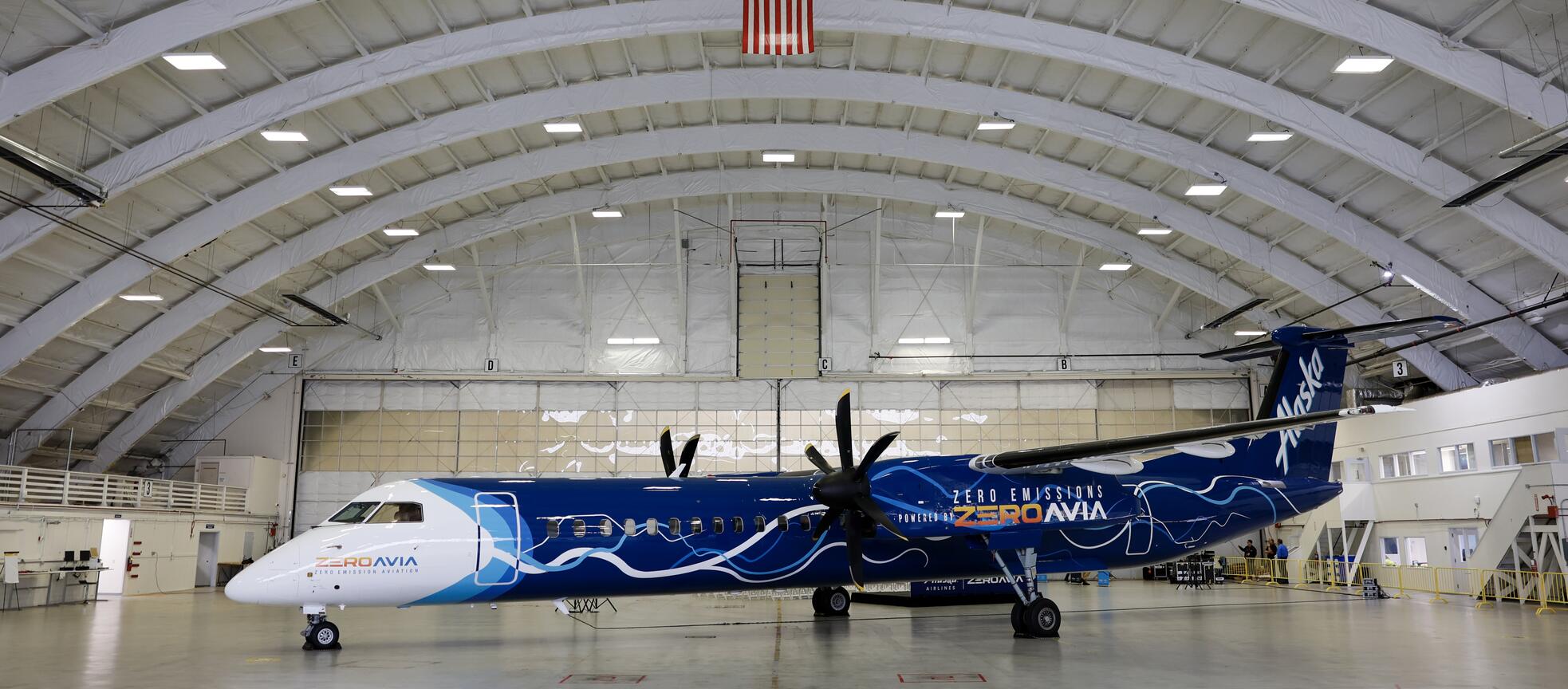EF Global VTOL
04 Jul 2023

Alaska Airlines this week donated a Dash 8 Q400 twin turboprop aircraft to ZeroAvia to support the company’s work to convert regional airliners to hydrogen propulsion. The aircraft handed over at a May 1 event at ZeroAvia’s research and development facility at Paine Field in Washington state will be fitted with the company’s ZA2000 fuel-cell-based propulsion system in preparation for eventual flight testing.
ZeroAvia plans to retrofit the aircraft with a prototype of the ZA2000 system to power the propeller on the left side of the aircraft, with the right side retaining its Pratt & Whitney PW150A engine. The company says it expects to be ready to start flight testing the 78-seat aircraft in 2024.
During the event, ZeroAvia gave a public debut to its 1.8-MW HyperCore modular electric motor system, which provided power for a propeller spinning on the back of its HyperTruck ground-test rig. The company is combining the motor system with its high-temperature polymer electrolyte membrane fuel cells and advanced power electronics in a bid to convert larger airliners to hydrogen.
ZeroAvia aims to be able to deliver converted 40- to 80-seat aircraft with a range of around 700 nm by 2027. In January, it conducted a first flight test with the 600-kW ZA7600 powertrain fitted on a 19-seat Dornier 228 aircraft and it says this technology could be ready for commercial service in 2025.

ZeroAvia demonstrated its HyperTruck ground test rig at Paine Field in Washington state. (Image: ZeroAvia)
The HyperCore system consists of two motor modules, each of which is a high-speed, 900-kW, permanent magnet radial flux machine that operates at 20,000 rpm, which ZeroAvia says will deliver a motor power density of 15 kW/kg and have turbine speeds comparable to those of existing turboprop engines. The company says it could potentially scale up the power rating to 5.4 MW, which would allow it to be used for larger regional jets.
Along with American Airlines and United Airlines, Alaska Airlines is an investor in ZeroAvia, and it holds options for 50 of the company's propulsion systems. The carrier has not said exactly when or to what extent it might specifically integrate hydrogen-powered Dash 8s into its fleet but has indicated that the conversion project is part of its five-part plan to achieve net-zero operations by 2040.
The Dash 8 donated this week was formerly operated by Alaska Airlines’ regional subsidiary Horizon Air. It has been repainted in a special livery to mark its role in the hydrogen propulsion project. The ceremony was attended by Washington state Governor Jay Inslee, Congresswoman Suzan DelBene, Snohomish County Executive Dave Somers, and students from Raisbeck Aviation High School.
On March 3, rival powertrain developer Universal Hydrogen conducted a first flight test with a converted Dash 8-300 aircraft. It took off from Grant County International Airport in Moses Lake, Washington. The company is also working to convert ATR 42 and 72 twin turboprops.
Both companies have reported conditional preorder agreements for aircraft conversions to be conducted under supplemental type certificates. ZeroAvia says it now holds commitments for 1,500 of its propulsion systems with between 600 and 700 of these intended for aircraft with up to 19 seats. Universal Hydrogen has announced commitments for almost 100 conversion packages.